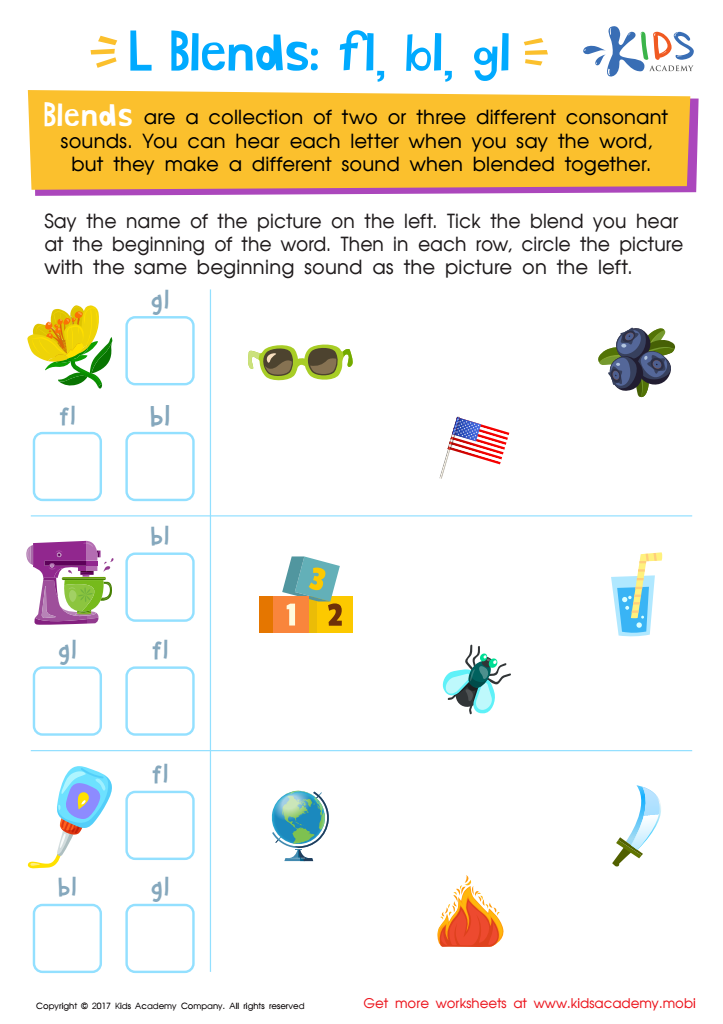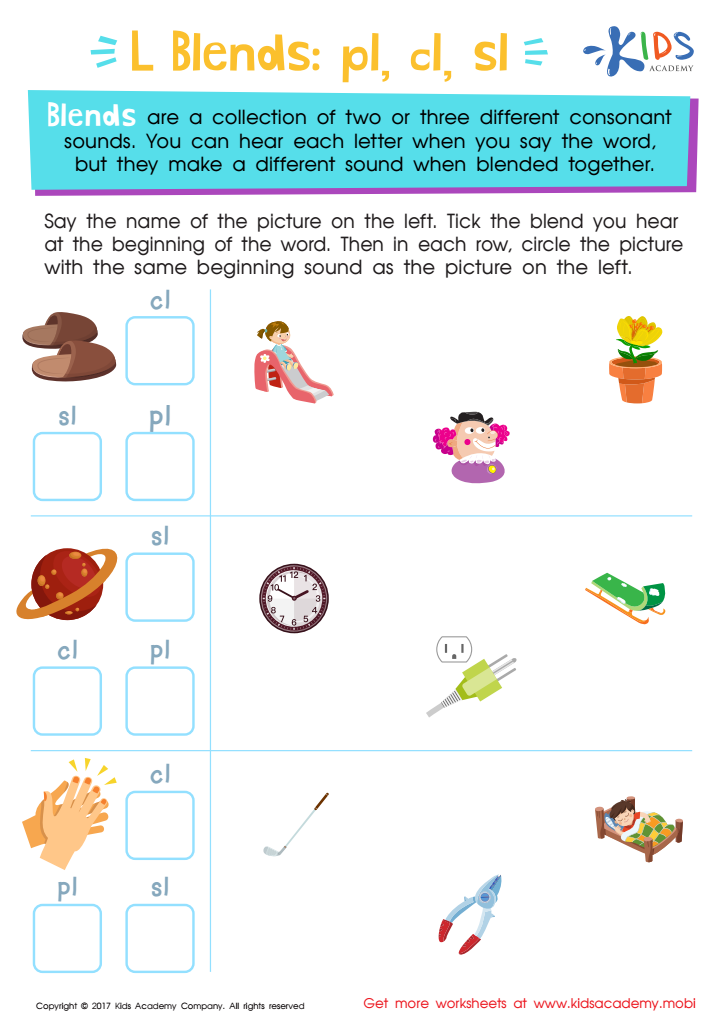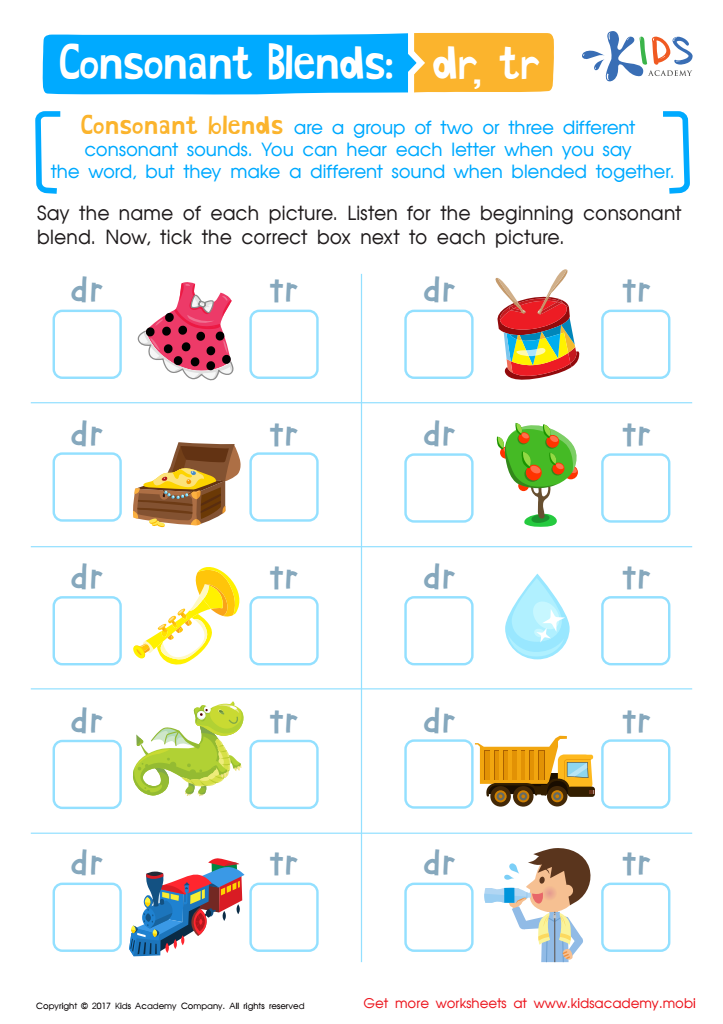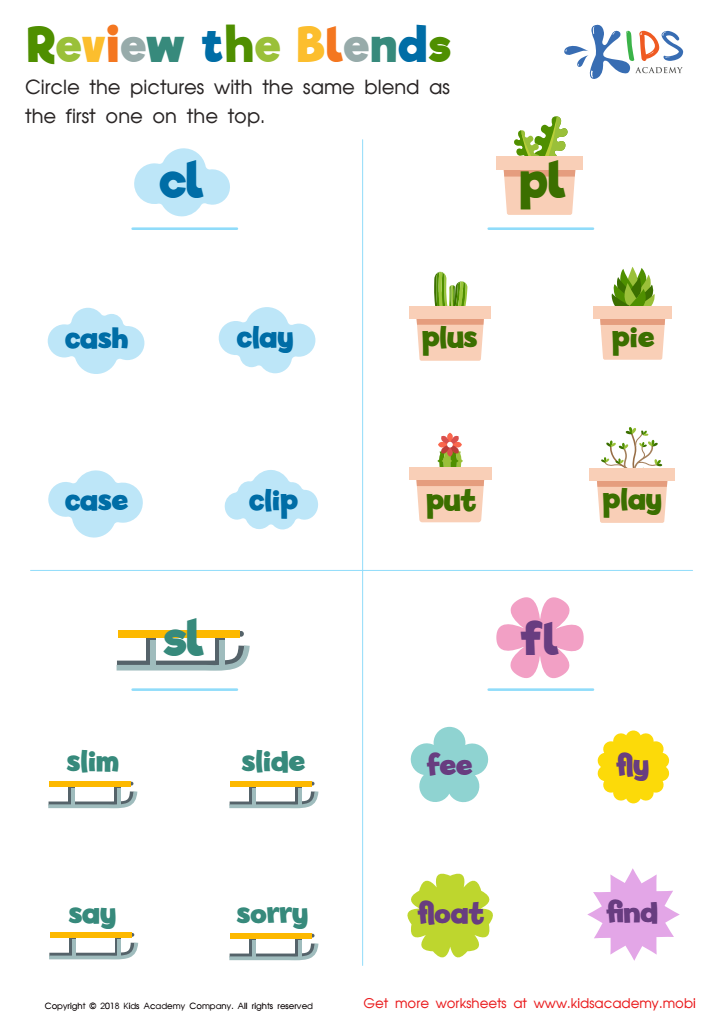Initial and Final Consonant Blends Worksheets for Ages 5-6
4 filtered results
-
From - To
Enhance your child’s reading skills with our Initial and Final Consonant Blends Worksheets for ages 5-6. These printable worksheets focus on blending consonants to form target phonetic sounds, crucial for early reading proficiency. Each engaging activity helps kids recognize and pronounce initial and final blends, reinforcing their understanding through fun exercises. Perfect for classroom or home use, these worksheets promote literacy in an interactive, enjoyable way. Support your child's learning journey with our expertly designed resources aimed at developing essential phonics skills. Download now to make learning exciting and effective!


Blending Consonants: "Fl", "Bl" and "Gl" Printable


L Blends: "Pl", "Cl" and "Sl" Printable


Consonant Blends: "Dr" and "Tr" Printable


Review the Blends Worksheet
Initial and final consonant blends are crucial in early literacy development for ages 5-6, as they form the foundation for reading and writing skills. A consonant blend consists of two or more consonants coupled together where each consonant’s individual sound can be heard. Examples of initial blends include "bl" in "black" or "st" in "stop," while final blends might include "nd" in "sand" or "mp" in "lamp."
Mastering consonant blends enhances phonemic awareness, which is the ability to recognize and manipulate sounds in words, a critical component in learning to read. It helps children decode unfamiliar words by breaking them into smaller, more manageable parts, thereby boosting confidence and fluency in reading.
For writing, understanding consonant blends supports correct spelling and the ability to construct words more easily. This knowledge facilitates better communication skills, as children can more accurately translate sounds to print.
Moreover, difficulty with these blends can indicate broader language challenges, making it easier for teachers and parents to intervene early. Investing time in these foundational skills can set children on a positive academic trajectory, thereby fostering a lifelong love for learning and reading. Through engaging activities, repetition, and practice, young learners can effectively grasp these blends, paving the way for advanced literacy competencies.

 Assign to the classroom
Assign to the classroom






